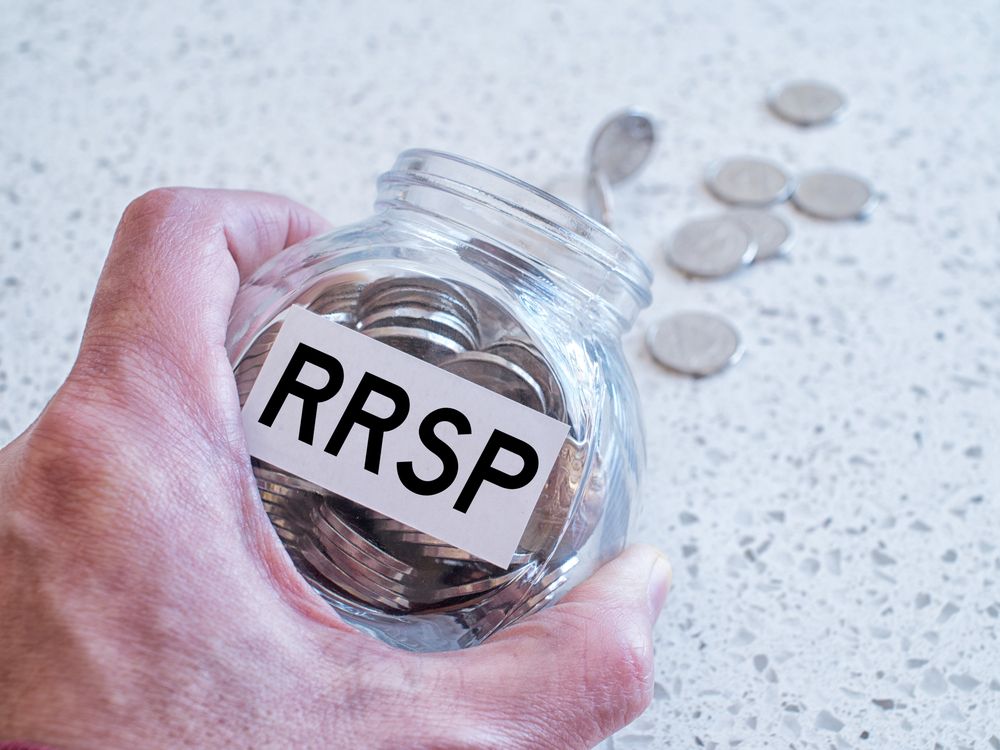Business
Couple Considers RRSP Cash-Out to Boost Retirement Benefits

A couple from Moncton is weighing the financial implications of cashing in their registered retirement savings plans (RRSPs) to enhance their retirement benefits. Elise and Ron, both aged 62, have faced significant financial challenges due to a serious cancer diagnosis in 2014. Now, as they prepare for retirement in 2028, they are exploring ways to maximize their Old Age Security (OAS) and Guaranteed Income Supplement (GIS) payments.
Elise and Ron currently have a combined income of approximately $14,400 annually from the Canada Pension Plan (CPP), with Ron expecting about $8,000 and Elise approximately $6,400. The couple has no additional retirement income sources and is considering withdrawing funds from Ron’s RRSP, which totals around $125,000. Their goal is to pay taxes on these withdrawals now to qualify for GIS benefits when they retire.
This strategy involves transferring the after-tax amount from the RRSP into tax-free savings accounts (TFSAs). With Ron’s expected annual employment income of $50,000 for the years 2022 to 2024 and Elise’s part-time income of $8,000, they believe they can manage their expenses while gradually depleting the RRSP.
By drawing from their CPP, OAS, and the anticipated GIS—calculated based on their combined CPP income—they plan to withdraw approximately $5,000 annually from their TFSA funds, which they will build up from the RRSP transfers. Additionally, they project selling their home for an equity of $250,000 when Ron turns 71 and expect an inheritance of $80,000 by 2030.
Financial Planning Recommendations
Financial advisor Allan Norman, M.Sc., CFP, CIM, from Atlantis Financial Inc., offers insights into the couple’s situation. He suggests that while their current strategy is sound, it is crucial not to focus solely on one approach. He encourages a broader view to identify potentially more advantageous solutions.
Norman outlines four strategies for managing their RRSPs:
1. **Do nothing now** and draw on the RRSPs as needed at age 65.
2. **Deplete the RRSP** by the time they turn 65 and transfer the proceeds to their TFSAs to maximize GIS.
3. **Delay RRSP withdrawals** until age 65, then convert to a registered retirement income fund (RRIF) to split pension income and reduce taxes.
4. **Delay CPP until age 70** to increase the benefit and use RRIF withdrawals to supplement income until then.
Norman’s analysis indicates that the second option—depleting the RRSP by age 64—would result in the lowest taxable income and the highest GIS. This approach aligns with the couple’s financial strategy, as the GIS amount is determined by net income minus OAS, ensuring that any funds withdrawn from a TFSA are not considered taxable income.
According to Norman, the solution with the highest net worth at age 91 involves the highest tax payments, as all taxes are paid in the first few years while Ron is still working. Notably, if the couple chooses to delay their CPP payments, they would incur little to no tax on future RRIF withdrawals due to their low income.
Norman also emphasizes the importance of considering future cash flow changes, particularly regarding housing after selling their home. This could influence their financial strategy and warrant a reevaluation of their plans.
Conclusion
As Elise and Ron navigate their financial options, they are encouraged to weigh various strategies carefully. With their health and financial stability in mind, they aim for a comfortable retirement that allows them to enjoy the years ahead without the burden of financial strain. Norman wishes them well, hoping they remain cancer-free and find joy in their retirement years.
For further personalized advice, they can reach out to financial planning professionals like Norman, who can offer tailored solutions to meet their unique needs.
-

 Education3 months ago
Education3 months agoBrandon University’s Failed $5 Million Project Sparks Oversight Review
-

 Science4 months ago
Science4 months agoMicrosoft Confirms U.S. Law Overrules Canadian Data Sovereignty
-

 Lifestyle3 months ago
Lifestyle3 months agoWinnipeg Celebrates Culinary Creativity During Le Burger Week 2025
-

 Health4 months ago
Health4 months agoMontreal’s Groupe Marcelle Leads Canadian Cosmetic Industry Growth
-

 Science4 months ago
Science4 months agoTech Innovator Amandipp Singh Transforms Hiring for Disabled
-

 Technology4 months ago
Technology4 months agoDragon Ball: Sparking! Zero Launching on Switch and Switch 2 This November
-

 Education4 months ago
Education4 months agoRed River College Launches New Programs to Address Industry Needs
-

 Technology4 months ago
Technology4 months agoGoogle Pixel 10 Pro Fold Specs Unveiled Ahead of Launch
-

 Business3 months ago
Business3 months agoRocket Lab Reports Strong Q2 2025 Revenue Growth and Future Plans
-

 Technology2 months ago
Technology2 months agoDiscord Faces Serious Security Breach Affecting Millions
-

 Education4 months ago
Education4 months agoAlberta Teachers’ Strike: Potential Impacts on Students and Families
-

 Education4 months ago
Education4 months agoNew SĆIȺNEW̱ SṮEȽIṮḴEȽ Elementary Opens in Langford for 2025/2026 Year
-

 Science4 months ago
Science4 months agoChina’s Wukong Spacesuit Sets New Standard for AI in Space
-

 Business4 months ago
Business4 months agoBNA Brewing to Open New Bowling Alley in Downtown Penticton
-

 Business4 months ago
Business4 months agoNew Estimates Reveal ChatGPT-5 Energy Use Could Soar
-

 Technology4 months ago
Technology4 months agoWorld of Warcraft Players Buzz Over 19-Quest Bee Challenge
-

 Business4 months ago
Business4 months agoDawson City Residents Rally Around Buy Canadian Movement
-

 Technology2 months ago
Technology2 months agoHuawei MatePad 12X Redefines Tablet Experience for Professionals
-

 Technology4 months ago
Technology4 months agoFuture Entertainment Launches DDoD with Gameplay Trailer Showcase
-

 Top Stories3 months ago
Top Stories3 months agoBlue Jays Shift José Berríos to Bullpen Ahead of Playoffs
-

 Technology4 months ago
Technology4 months agoGlobal Launch of Ragnarok M: Classic Set for September 3, 2025
-

 Technology4 months ago
Technology4 months agoInnovative 140W GaN Travel Adapter Combines Power and Convenience
-

 Science4 months ago
Science4 months agoXi Labs Innovates with New AI Operating System Set for 2025 Launch
-

 Technology4 months ago
Technology4 months agoNew IDR01 Smart Ring Offers Advanced Sports Tracking for $169










